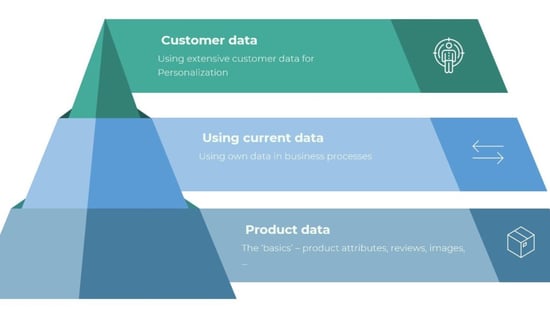.png)
Ever wonder why everyone's talking about data? It's not just a buzzword — it's the secret sauce for making smarter decisions, understanding your customers, and saving money. When you follow the data instead of gut feelings, you're on the path to better pricing, effective marketing, and products people actually want.
Dive into your own data goldmine, discover trends, and adapt to what your customers really want. It’s not rocket science — just good business.
Why should you care about data?
What we mean when we say “data”
We’re not the first to tell you that gathering data is key to a successful online business. Everyone is going on and on about customer data, and how to leverage those in your business. And yes, it’s a great idea to find out as much about your customers as you can.
Hear us out, though: there’s a trap. You can gather customer data until you turn blue in the face, without seeing any benefits at all. Why? Because you’re not building on the basics.
Customer data are only the tip of the iceberg — or rather, the data pyramid:

Start by building a broad base of product data
Use your product data to offer customers a well-informed, clear buying journey. Help them to understand precisely what they’re buying:
Detailed product data make your customers feel confident they’ve found the perfect product. Without all that information, they may feel lost on your website or unable to decide to buy your product.
Even though managing product data seems simple, don’t underestimate the effort it takes to offer them to your customers. But we promise you it will all be worth it. Visualise product data just right, and you will help customers find the product they’re looking for and buy it straight away.
Get your own data to work for you
You’re already sitting on piles and piles of data, long before a particular customer steps through your digital front door. Your e-commerce platform is keeping track of everything from your marketing efforts to conversion rates. These analytics give you valuable insights into how your target audience behaves as a whole. And there’s a lot you can learn from them as a group:
Use these data to find out who, precisely, is using your channels and buying from you. Chances are, you will see a few personas emerge. Once you know what a certain group of customers want, you can start tailoring their experience.
Finetune with customer data
The cherry on top of your sales effort should be a tailored, personalised shopping experience. Tracking individual consumers through your sales funnel is only effective after you’ve implemented the previous two tiers of data. But oh, how effective it can be:
This is where you truly show your customers you understand their needs and make them feel like they’re interacting with you one-on-one. And that’s how returning customers are made.
Get to work!
How do you start building a data-driven company of your own? Here’s a step-by-step guide:
Need a game-changer for your e-commerce strategy?
Get in touch with the experts at Digitalum.
These Stories on CIONET Belgium
No Comments Yet
Let us know what you think